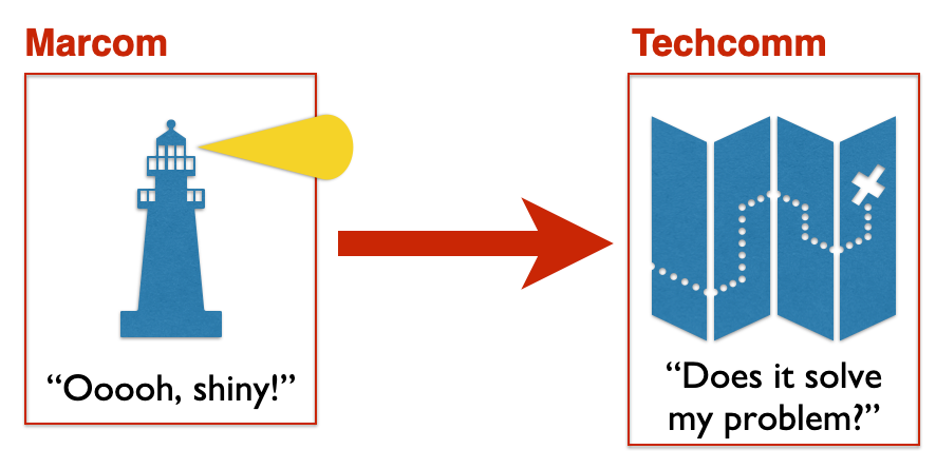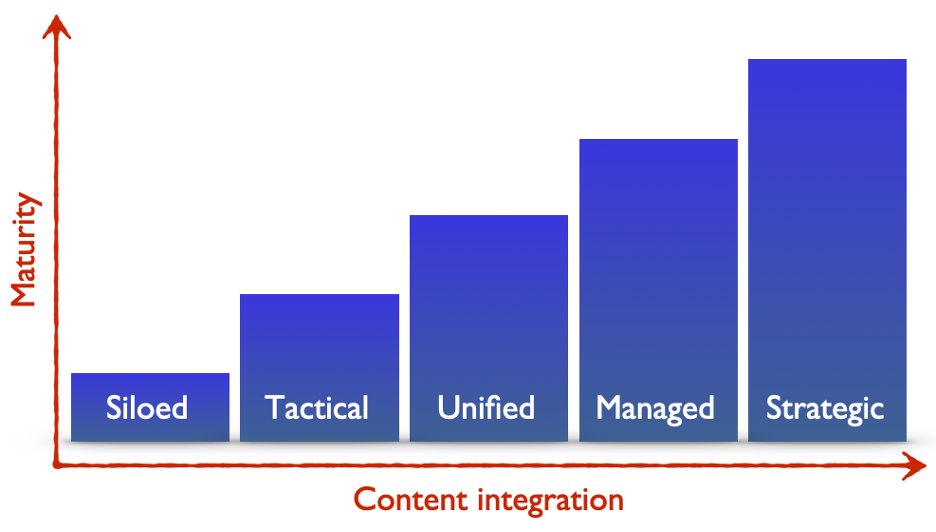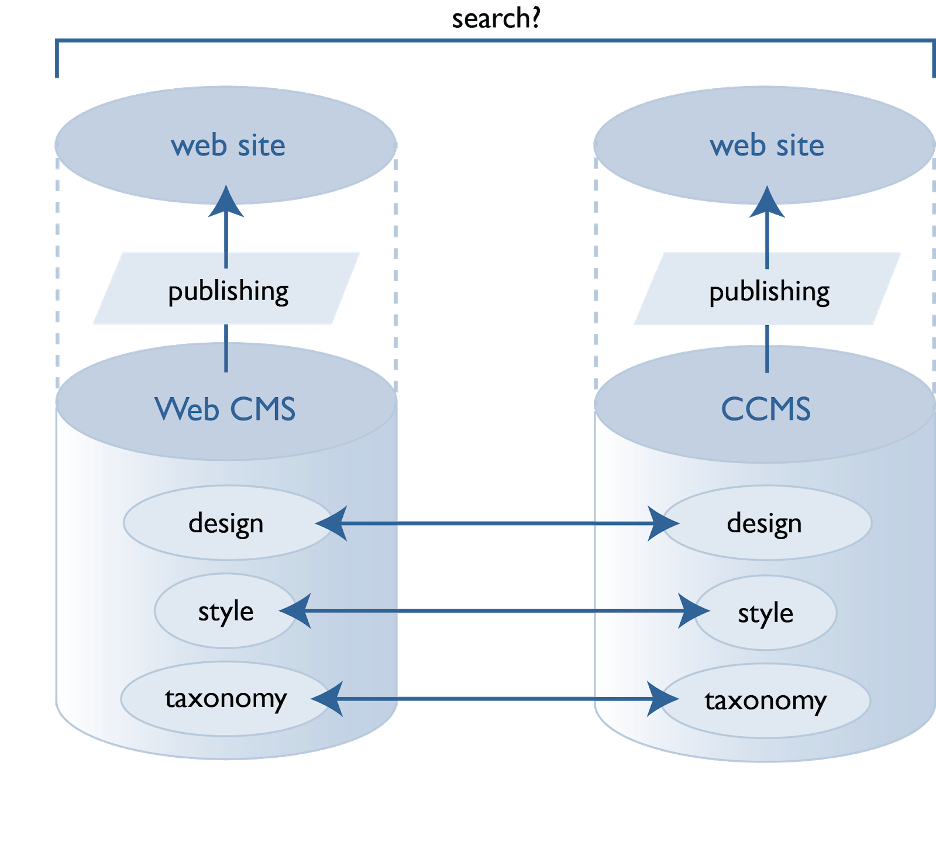Enterprise content strategy maturity model
“Whether you like it or not, your prospects already use technical content.”
In the paper age, it cost money to distribute information. That gave big organizations some control over information flow. A prospect interested in purchasing a product would get “pre-sales” information–marketing materials, sales pitches, and perhaps a data sheet. Only after buying the product could the prospect access “post-sales” information, such as technical content. (Buyers could and did request technical information from their sales representative, but the decision whether or not to provide the information rested with the organization.)
But in the digital age, information distribution is free, and that makes it difficult or impossible to control what information people receive. As a result, the distinction between pre-sales and post-sales content is blurring. If you are in the market for a new desk, and you’re considering “some assembly required” options, you might take a look at the assembly guide. If the build process looks daunting, a not-so-handy person may look elsewhere. If you’re considering a piece of software, you might glance at the user documentation to see whether tasks are explained clearly at a level that makes sense to you.

Oversimplified customer journey
Studies indicate that 80% or more of prospective buyers are doing online research to evaluate products and services before they buy.
Whether you like it or not, your prospects already use technical content.
What does that mean for your enterprise content strategy?
Marketing content (marcom) heightens awareness of a product, describes features and benefits, and creates interest or desire for the product. For a simple impulse buy, this might be enough, but for complex products, the buyer requires more information. Technical content (techcomm) enables product use. The buyer will look at technical information to determine whether a product meets their technical requirements. For example, if you are buying a car seat, you need to know whether that seat fits into your car. If it does not, the other car seat features are irrelevant. Similarly, you might consult the installation guide to see how difficult installation is.
Content consumers use all information available to them and do not follow the path you might prefer. Organizations must face this reality and adapt their content strategy accordingly.
Maturity model
We propose a maturity model for holistic content strategy, or content strategy across the enterprise. This model is based on work done by Rahel Anne Bailie as early as 2011. Rahel’s model focuses on the maturity of the content and the content processes. We propose an enterprise content strategy maturity model that looks at the level of content integration across the organization.

Maturity model for holistic content strategy
| Level | Name | Description |
| 1 | Siloed | Each content type (marcom, techcomm, and so on) is developed and deployed separately. |
| 2 | Tactical | High-level coordination for terminology or UX. Content types are authored and published in separate silos. |
| 3 | Unified | Customers receive unified content, but authoring and delivery processes are fragmented. |
| 4 | Managed | Content governance is consistent across content types. Authoring/publishing systems allow for content sharing and linking. |
| 5 | Strategic | Business strategy recognizes each content type as a contributor to the overall customer experience. Systems support holistic approach. |
Many or most of Scriptorium’s clients are in Level 1 with silos for marcom, techcomm, technical support, training, and more. To improve content strategy maturity, you face a set of daunting tasks:
- Establish and use terminology standards—in all languages
- Ensure consistent UX across all customer-facing content
- Unify authoring and publishing systems
- Include content strategy for all content types in product development
Establish and use terminology standards—in all languages
To move into the Tactical level, you need to establish organizational standards for terminology. This means that all customer-facing groups use the same words to mean the same thing. The safety device that babies ride in can be a “car seat” or an “infant safety seat,” but the organization should choose one term and use it consistently. The same principle applies in all languages, so you need to establish terminology across all supported languages in the organization.
Ensure consistent UX across all customer-facing content
The Unified level looks at content from the customer’s point of view. Internal authoring and delivery systems may be fragmented and siloed, but the customer gets a consistent user experience across all types of customer-facing content. If you have fragmented content development systems, you’ll need to match the design, style, taxonomy, and publishing across each of the content silos, and then ensure that the search works across all content types. This is a significant effort.

Ensuring consistent UX across multiple systems is a challenge
Unify authoring and publishing systems
To move to Level 4, Managed, you begin to align your authoring and publishing systems. Instead of duplicating work in multiple systems to present the illusion of alignment, you limit the number of authoring/publishing systems in the enterprise, impose consistent content governance across your content types, and look for opportunities to share and link content effectively.
Include content strategy for all content types in product development
In Level 5, Strategic, your enterprise content strategy accounts for all content types. The product design and planning process includes them as part of the product, and plans for systematic development and delivery of content across all of the needed content types. The content systems in place support this holistic approach.
Enterprise content strategy in your organization
Take a hard look at your organization’s content and especially the customer experience for your content. If you decide you need to improve your enterprise content strategy maturity, contact us.



Sabine Ocker
Hi Sarah
I heard you mention this study during the Enterprise Content Strategy webinar you did yesterday with Scott and Patrick. I’d love to read it–is it okay to ask for it?
thanks!
Sabine
Sarah O'Keefe
but of course!